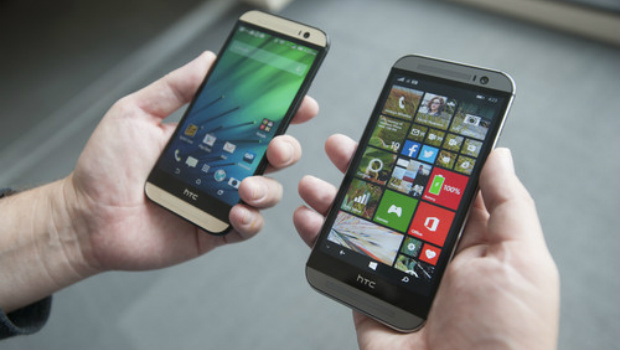The HTC One (M8) for Windows offers better battery life than its Android counterpart–at least, according to HTC’s own specifications.
HTC’s One (M8) is available running either a recent version of the Android OS, or, as of this week, Microsoft’s Windows Phone. HTC officials have said the hardware between the two is virtually identical, with the same chassis, screen, microprocessor, memory, and storage built into both phones.
HTC, however, says the Android version of the phone is rated at 20 hours of 3G talk time, and up to 496 hours of standby time, as noted by Neowin.net. HTC’s One (M8) for Windows is rated at 22 hours of 3G talk time, and up to 528 hours of standby while using 3G. That’s a 10% advantage for the Windows Phone version in talk time, and a 6.45% advantage in standby time.
The natural question is whether Microsoft’s Windows Phone OS is more efficient, from a power perspective, than the Android version 4.4.2 (KitKat) that is powering HTC’s phone. If so, that might be a selling point for consumers hoping to eke out every last bit of power from their HTC One (M8) phone – and a feather in the cap of Microsoft, which has just 2.5% of the world smartphone share, compared with almost 85% for Android.
Under the hood, though, there may be another answer: The two versions of the One (M8) may not be truly identical, after all.
Consider the cellular radios the two phones use. HTC’s One (M8) for Android supports a number of different frequencies: 850/900/1800/1900MHz for 2G GSM/GPRS/EDGE networks; 3G WCDMA 850/900/1900/2100 MHz with HSPA+ for Europe, Asia, and the major US carriers.
The One (M8) for Windows uses the same 2G, 3G, and CDMA bands, but only a subset of the LTE frequencies that the Android version uses: specifically the 700/1700/1800/2600 MHz frequency bands.
PCWorld








Subscribers 0
Fans 0
Followers 0
Followers